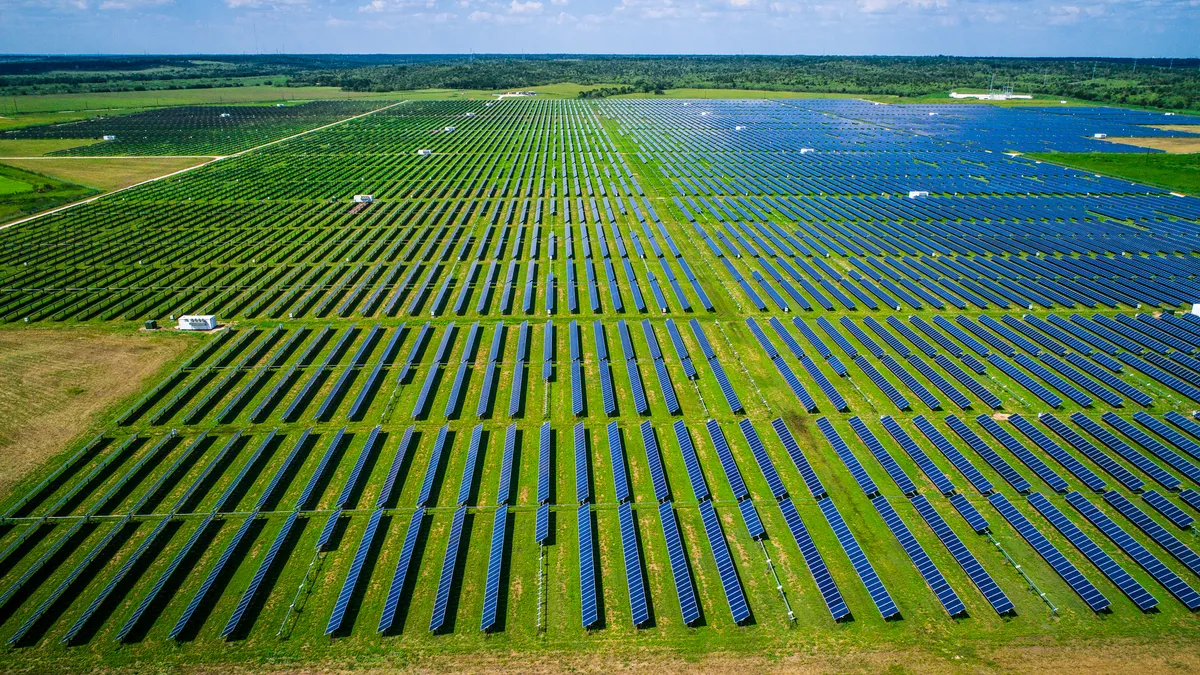Developers aim to add 29.1 GW of solar generating capacity to the U.S. grid in 2023, accounting for 54% of planned new capacity for the year, the U.S. Energy Information Administration announced Monday.
EIA said 54.5 GW of total capacity is expected to come online this year, with solar ahead of the other sources. Battery storage has the second highest amount of capacity expected to come online this year at 9.4 GW, or 17% of the total, while 6 GW of wind capacity is expected.
“U.S. utility-scale solar capacity has been rising rapidly since 2010,” the agency said. “Despite its upward trend over the past decade, additions of utility-scale solar capacity declined by 23% in 2022 compared with 2021.”
Now, some delayed 2022 projects are expected to begin operating in 2023.
“If all of this capacity comes online as planned, 2023 will have the most new utility-scale solar capacity added in a single year,” EIA said. Previously, 2021 had set the record for most capacity added in a year with 17 GW.
Renewable energy developers in Texas plan to add 7.7 GW of solar capacity to its grid, followed by California, where 4.2 GW is expected. Together, the two states account for 41% of planned new solar capacity.
The EIA said in a mid-August report that around 20% of utility-scale solar projects were delayed in the first half of 2022 due to supply constraints, inflation and labor shortages.
A December report from Wood Mackenzie and the Solar Energy Industries Association projected that only 10.3 GW of new solar capacity had come online in 2022.
The industry was impacted by the June passage of the Uyghur Forced Labor Prevention Act, which resulted in shipments of solar panels being held by customs, and a Department of Commerce investigation into whether or not solar panels imported from certain Southeast Asian countries had circumvented tariffs on Chinese-made solar components.
The implementation of the Inflation Reduction Act and the tax credits it contained for solar production and projects are expected to drive both domestic supply and demand for solar components. Solar manufacturers First Solar and Hanwha Q Cells both recently announced billions of dollars of investments in the solar supply chain.














